Abstract
This paper provides evidence that normal animal cells possess a unique regulatory mechanism to shift them between proliferative and quiescent states. Cells cease to increase in number under a diversity of suboptimal nutritional conditions, whereas a uniformity of metabolic changes follows these nutritional shifts. Evidence is given here that cells are put into the same quiescent state by each of these diverse blocks to proliferation and that cells escape at the same point in G1 of the cell cycle when nutrition is restored. The name restriction point is proposed for the specific time in the cell cycle at which this critical release event occurs.
The restriction point control is proposed to permit normal cells to retain viability by a shift to a minimal metabolism upon differentiation in vivo and in vitro when conditions are suboptimal for growth. Malignant cells are proposed to have lost their restriction point control. Hence, under very adverse conditions, as in the presence of antitumor agents, they stop randomly in their division cycle and die.
Keywords: growth control, cell survival, cancer
Full text
PDF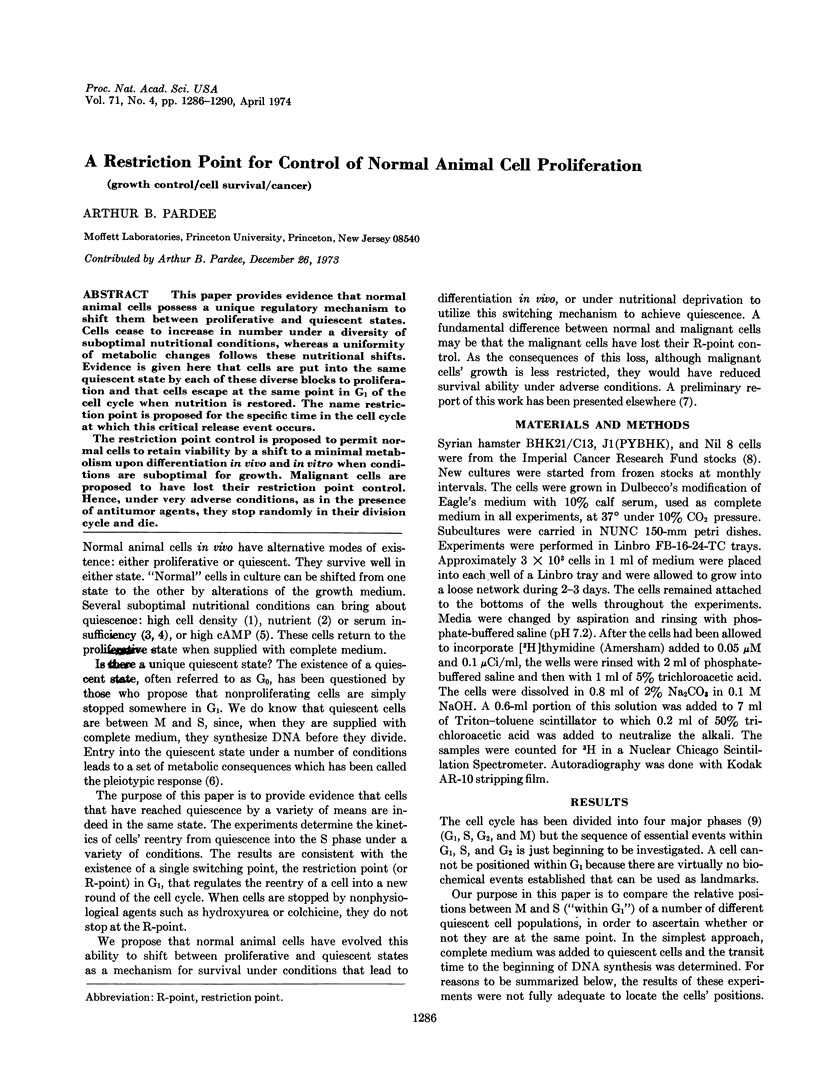
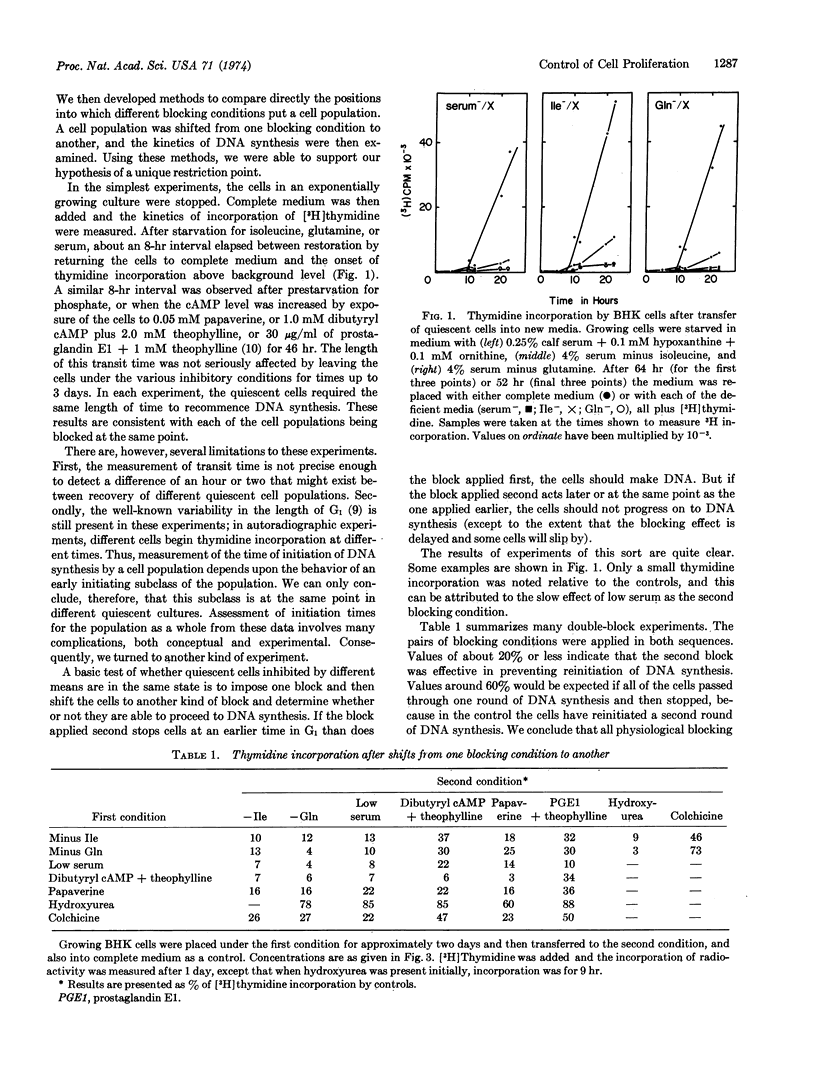
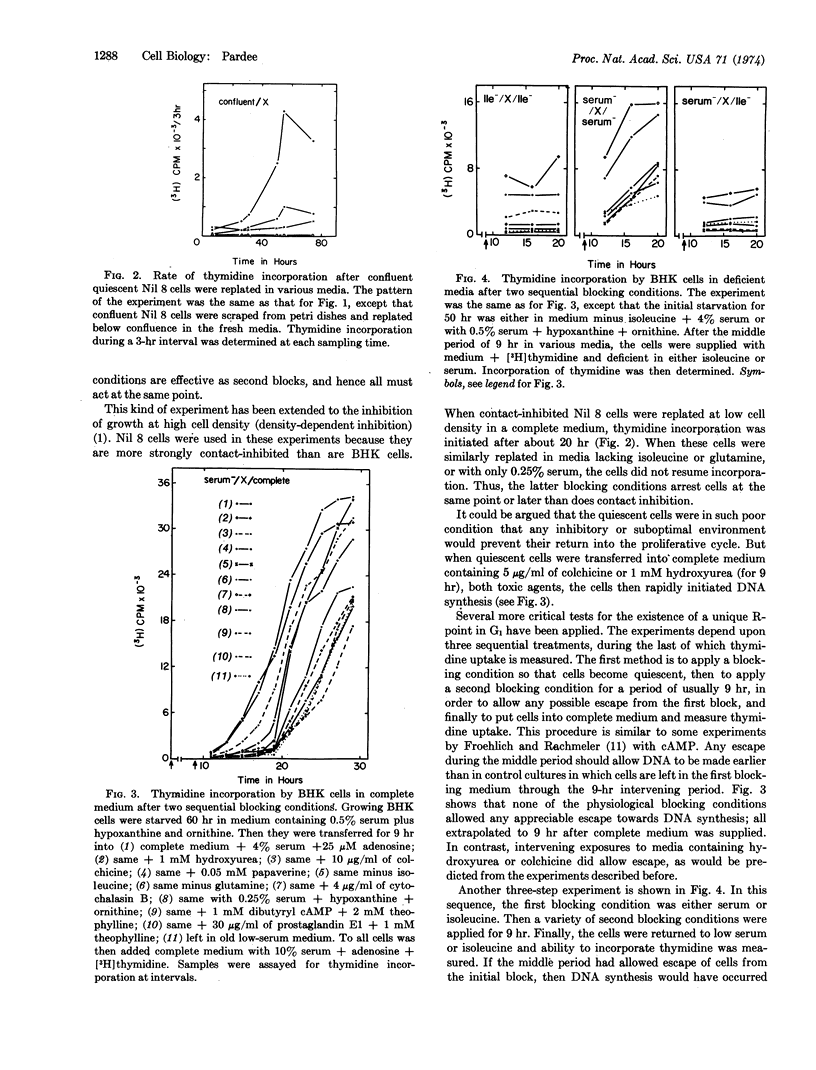
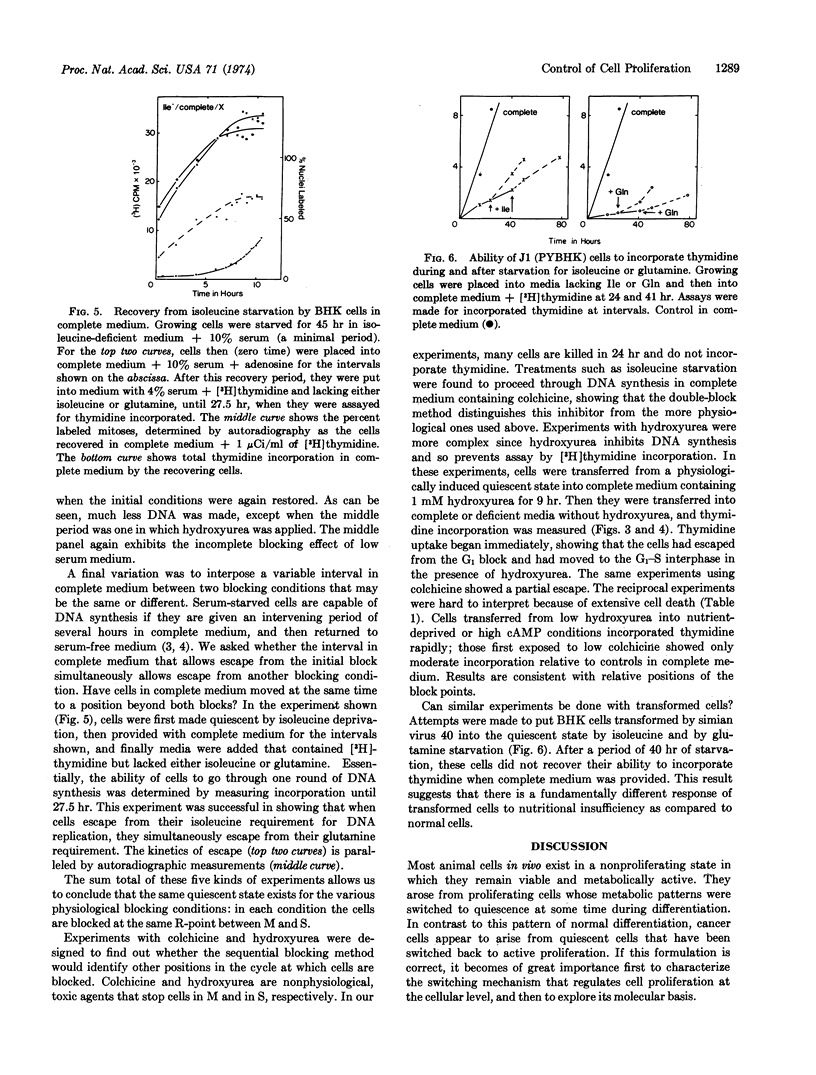
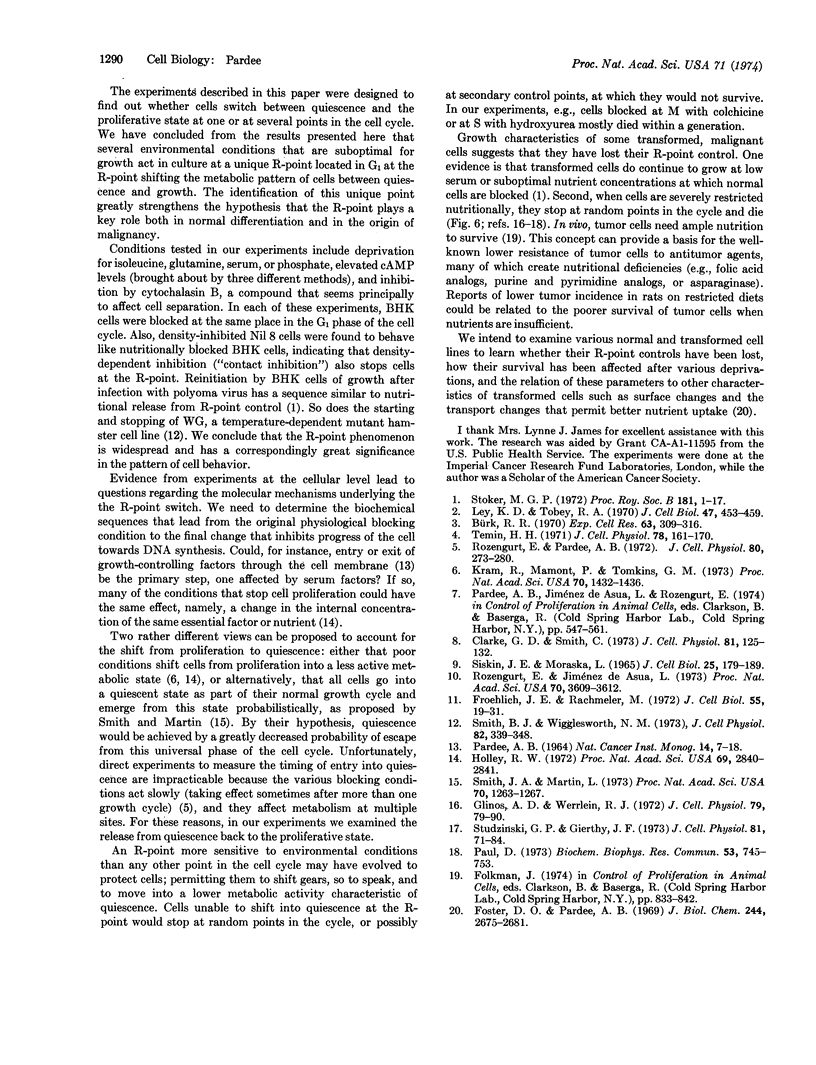
Selected References
These references are in PubMed. This may not be the complete list of references from this article.
- Bürk R. R. One-step growth cycle for BHK21-13 hamster fibroblasts. Exp Cell Res. 1970 Dec;63(2):309–316. doi: 10.1016/0014-4827(70)90218-1. [DOI] [PubMed] [Google Scholar]
- Clarke G. D., Smith C. The response of normal and polyoma virus-transformed BHK-21 cells to exogenous purines. J Cell Physiol. 1973 Feb;81(1):125–131. doi: 10.1002/jcp.1040810115. [DOI] [PubMed] [Google Scholar]
- Foster D. O., Pardee A. B. Transport of amino acids by confluent and nonconfluent 3T3 and polyoma virus-transformed 3T3 cells growing on glass cover slips. J Biol Chem. 1969 May 25;244(10):2675–2681. [PubMed] [Google Scholar]
- Froehlich J. E., Rachmeler M. Effect of adenosine 3'-5'-cyclic monophosphate on cell proliferation. J Cell Biol. 1972 Oct;55(1):19–31. doi: 10.1083/jcb.55.1.19. [DOI] [PMC free article] [PubMed] [Google Scholar]
- Holley R. W. A unifying hypothesis concerning the nature of malignant growth. Proc Natl Acad Sci U S A. 1972 Oct;69(10):2840–2841. doi: 10.1073/pnas.69.10.2840. [DOI] [PMC free article] [PubMed] [Google Scholar]
- Kram R., Mamont P., Tomkins G. M. Pleiotypic control by adenosine 3':5'-cyclic monophosphate: a model for growth control in animal cells. Proc Natl Acad Sci U S A. 1973 May;70(5):1432–1436. doi: 10.1073/pnas.70.5.1432. [DOI] [PMC free article] [PubMed] [Google Scholar]
- LaBella F. S., Sanwal M. Isolation of nerve endings from the posterior pituitary gland. Electron microscopy of fractions obtained by centrifugation. J Cell Biol. 1965 Jun;25(3 Suppl):179–193. doi: 10.1083/jcb.25.3.179. [DOI] [PubMed] [Google Scholar]
- PARDEE A. B. CELL DIVISION AND A HYPOTHESIS OF CANCER. Natl Cancer Inst Monogr. 1964 May;14:7–20. [PubMed] [Google Scholar]
- Paul D. Quiescent SV40 virus transformed 3T3 cells in culture. Biochem Biophys Res Commun. 1973 Aug 6;53(3):745–753. doi: 10.1016/0006-291x(73)90156-3. [DOI] [PubMed] [Google Scholar]
- Rozengurt E., Jimenez de Asua L. Role of cyclic 3':5'-adenosine monophosphate in the early transport changes induced by serum and insulin in quiescent fibroblasts. Proc Natl Acad Sci U S A. 1973 Dec;70(12):3609–3612. doi: 10.1073/pnas.70.12.3609. [DOI] [PMC free article] [PubMed] [Google Scholar]
- Smith B. J., Wigglesworth N. M. A temperature-sensitive function in a Chinese hamster line affecting DNA synthesis. J Cell Physiol. 1973 Dec;82(3):339–347. doi: 10.1002/jcp.1040820304. [DOI] [PubMed] [Google Scholar]
- Smith J. A., Martin L. Do cells cycle? Proc Natl Acad Sci U S A. 1973 Apr;70(4):1263–1267. doi: 10.1073/pnas.70.4.1263. [DOI] [PMC free article] [PubMed] [Google Scholar]
- Stoker M. G. The Leeuwenhoek lecture, 1971. Tumour viruses and the sociology of fibroblasts. Proc R Soc Lond B Biol Sci. 1972 Apr 18;181(1062):1–17. doi: 10.1098/rspb.1972.0038. [DOI] [PubMed] [Google Scholar]
- Studzinski G. P., Gierthy J. F. Selective inhibition of the cell cycle of cultured human diploid fibroblasts by aminonucleoside of puromycin. J Cell Physiol. 1973 Feb;81(1):71–83. doi: 10.1002/jcp.1040810109. [DOI] [PubMed] [Google Scholar]
- Temin H. M. Stimulation by serum of multiplication of stationary chicken cells. J Cell Physiol. 1971 Oct;78(2):161–170. doi: 10.1002/jcp.1040780202. [DOI] [PubMed] [Google Scholar]


